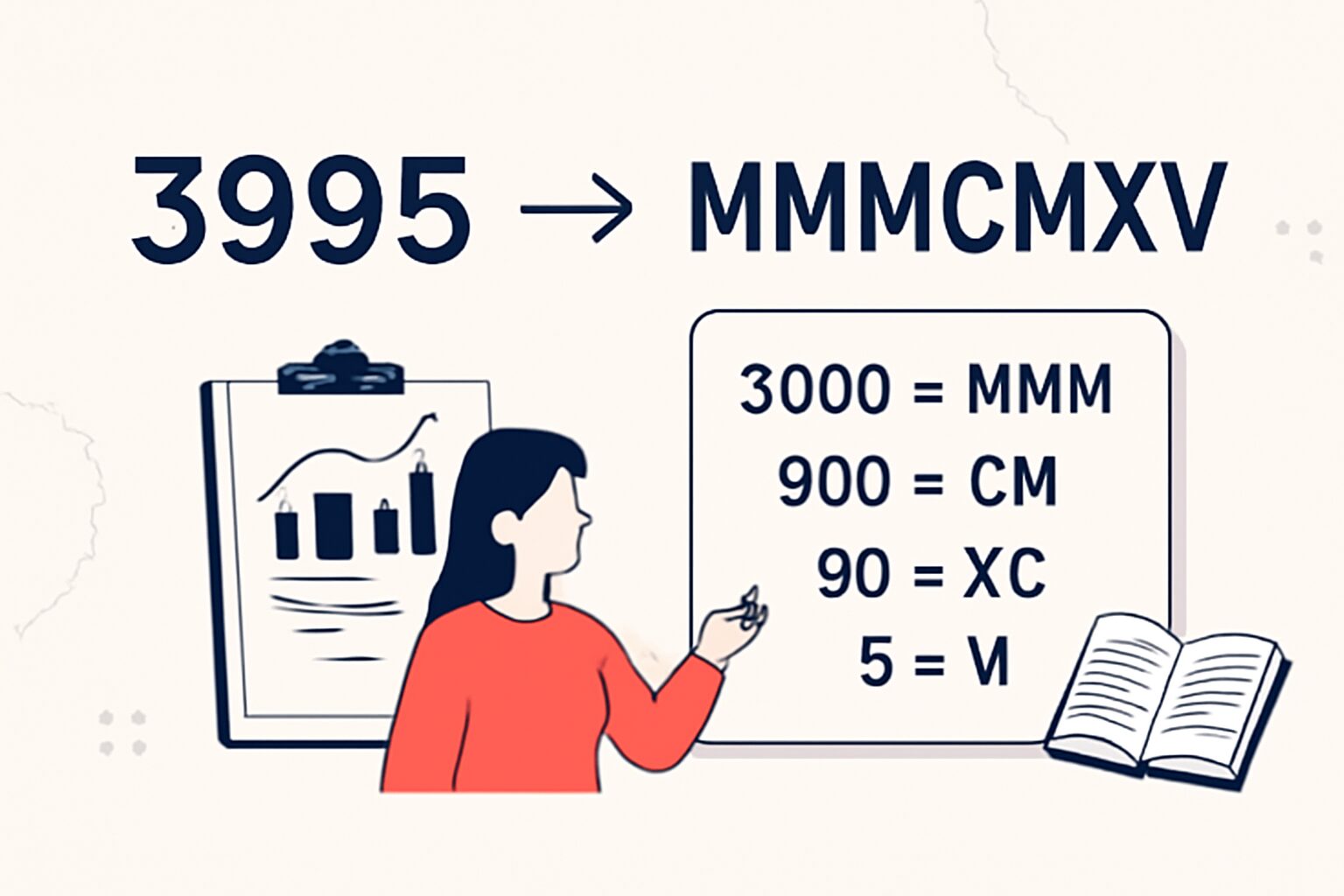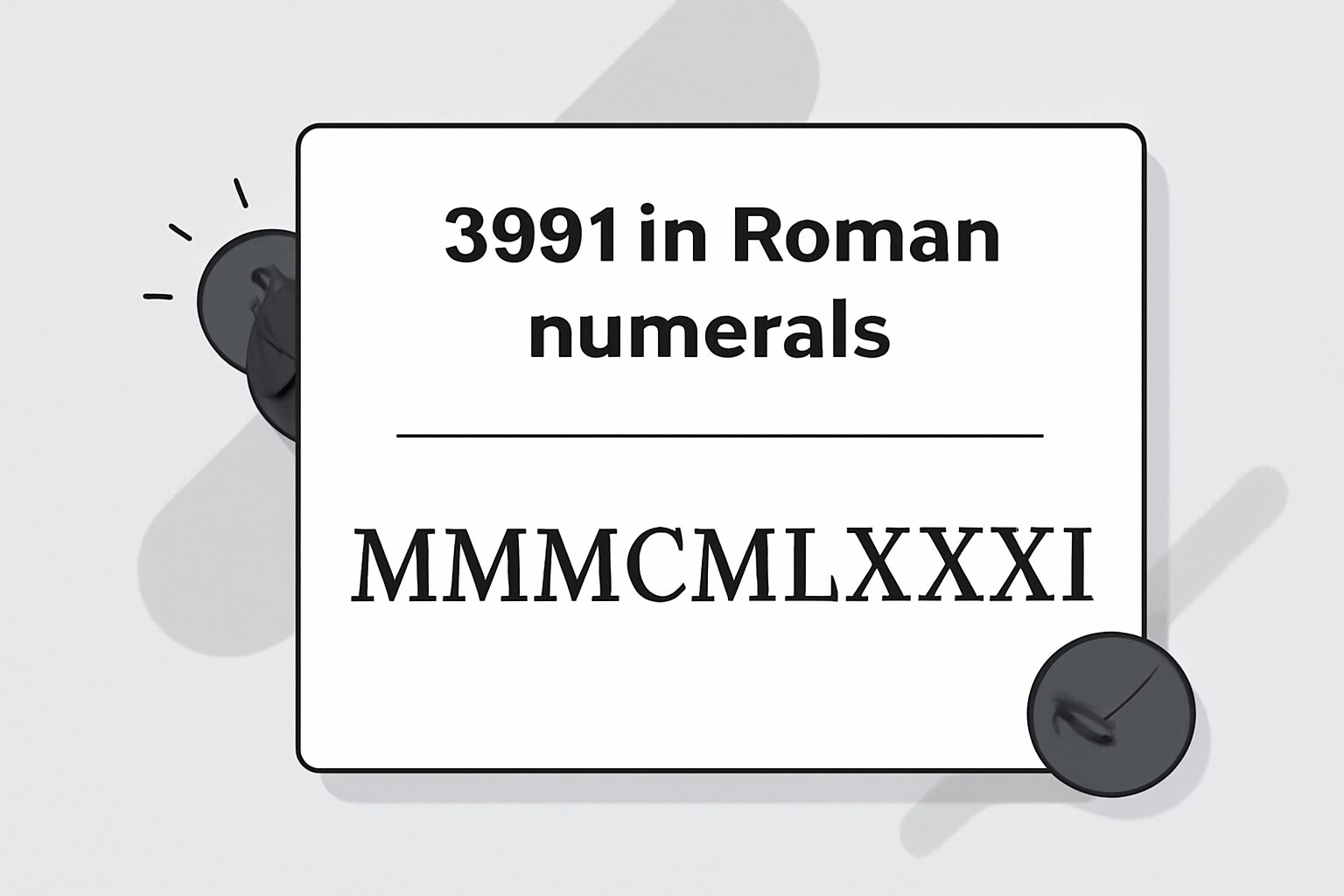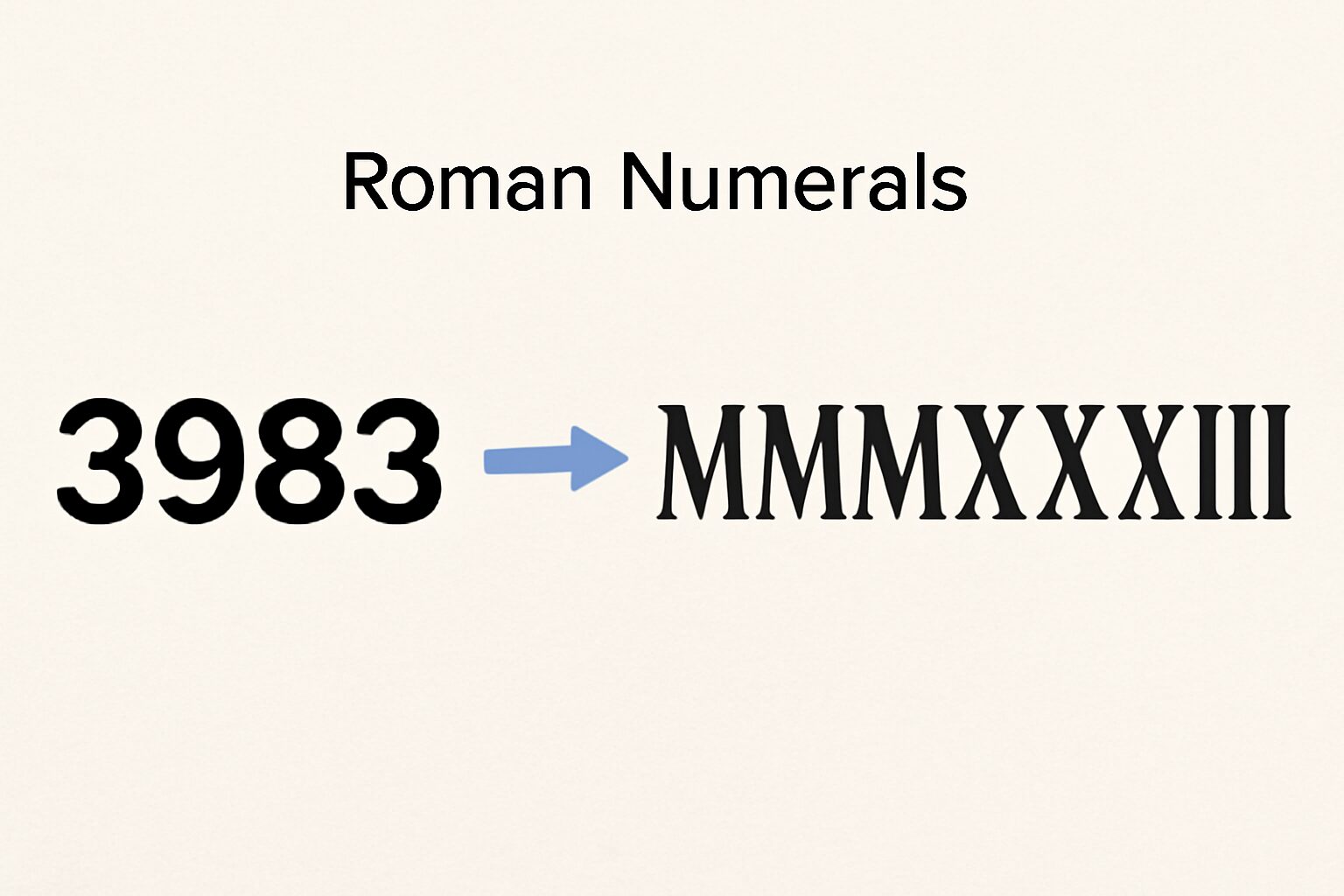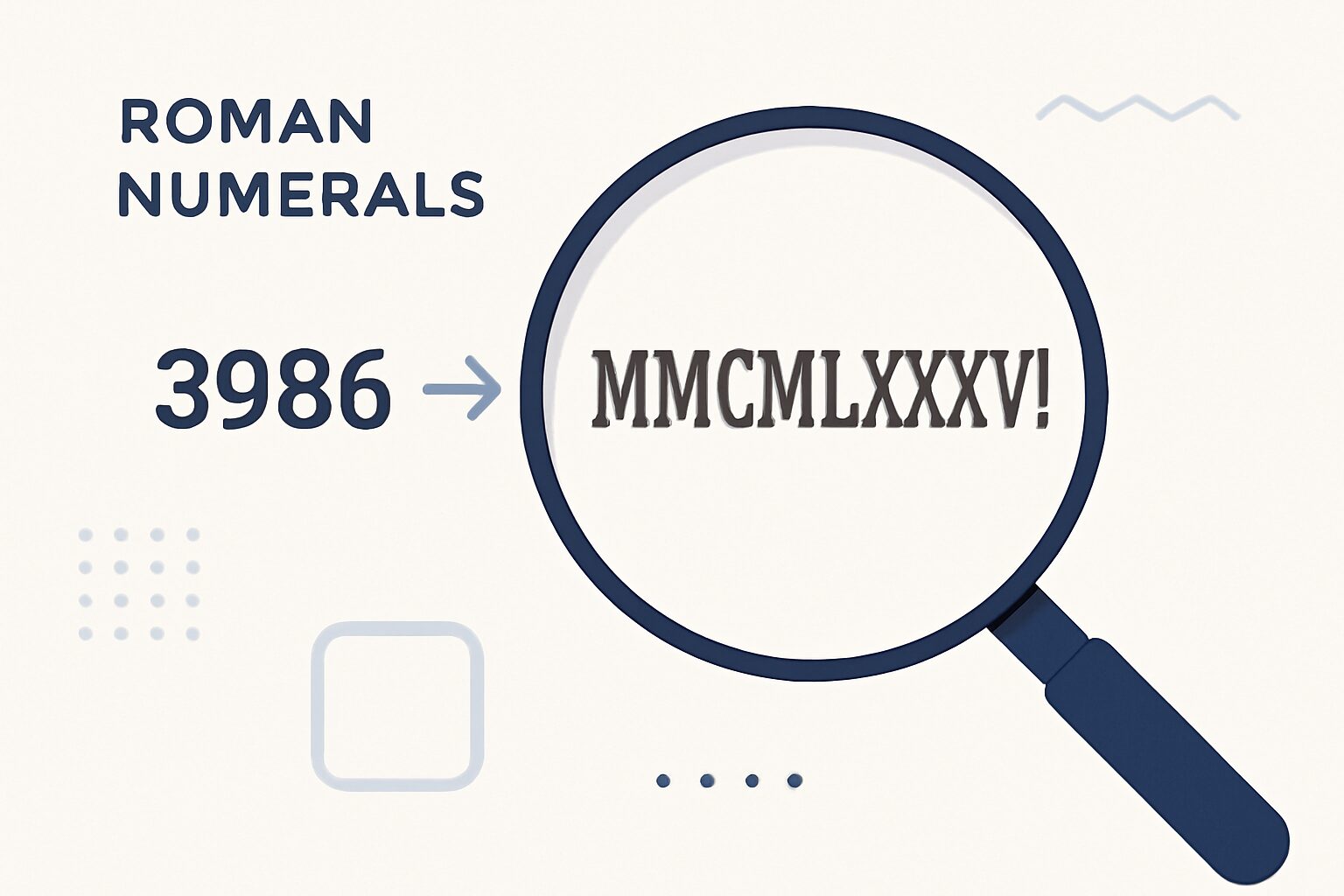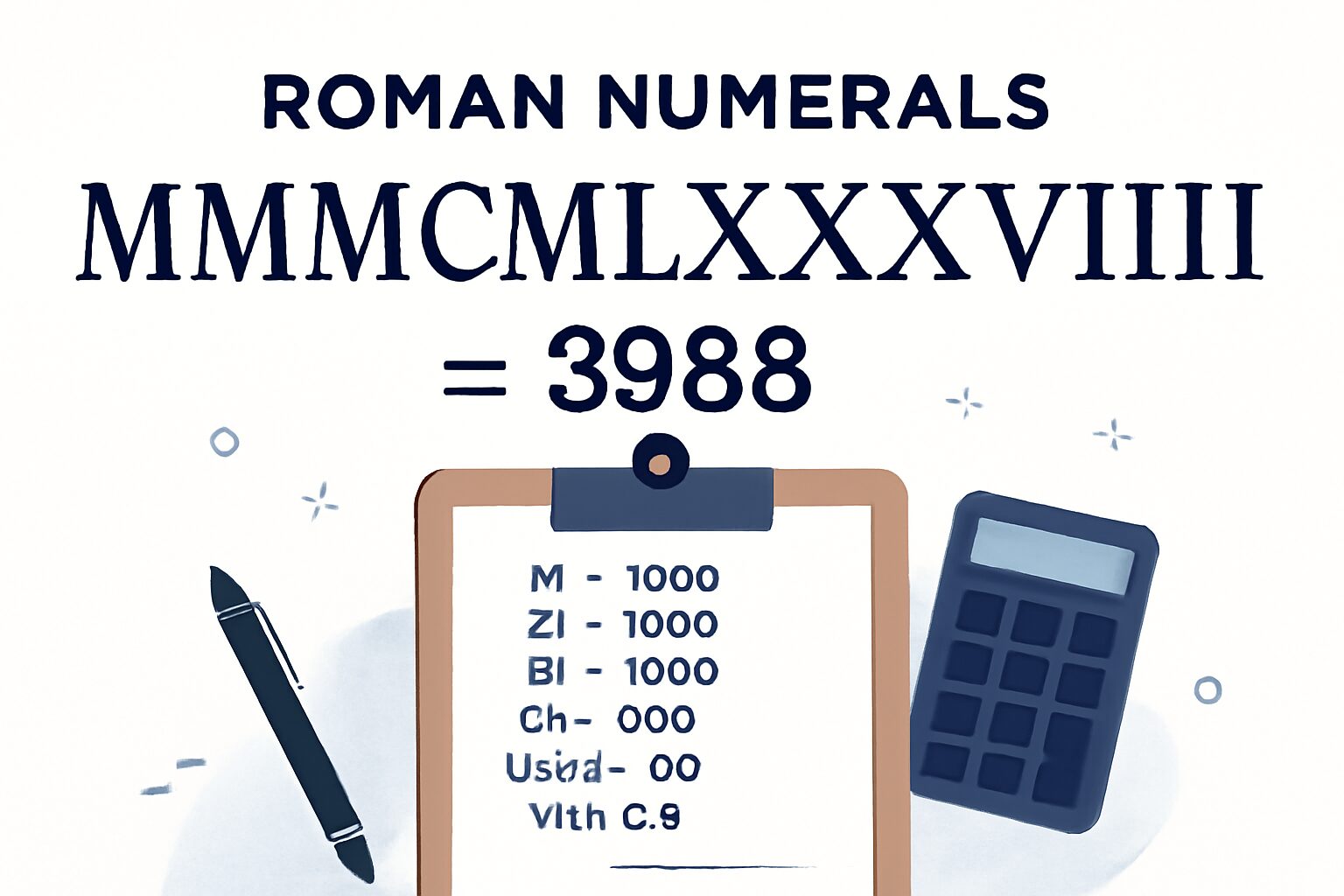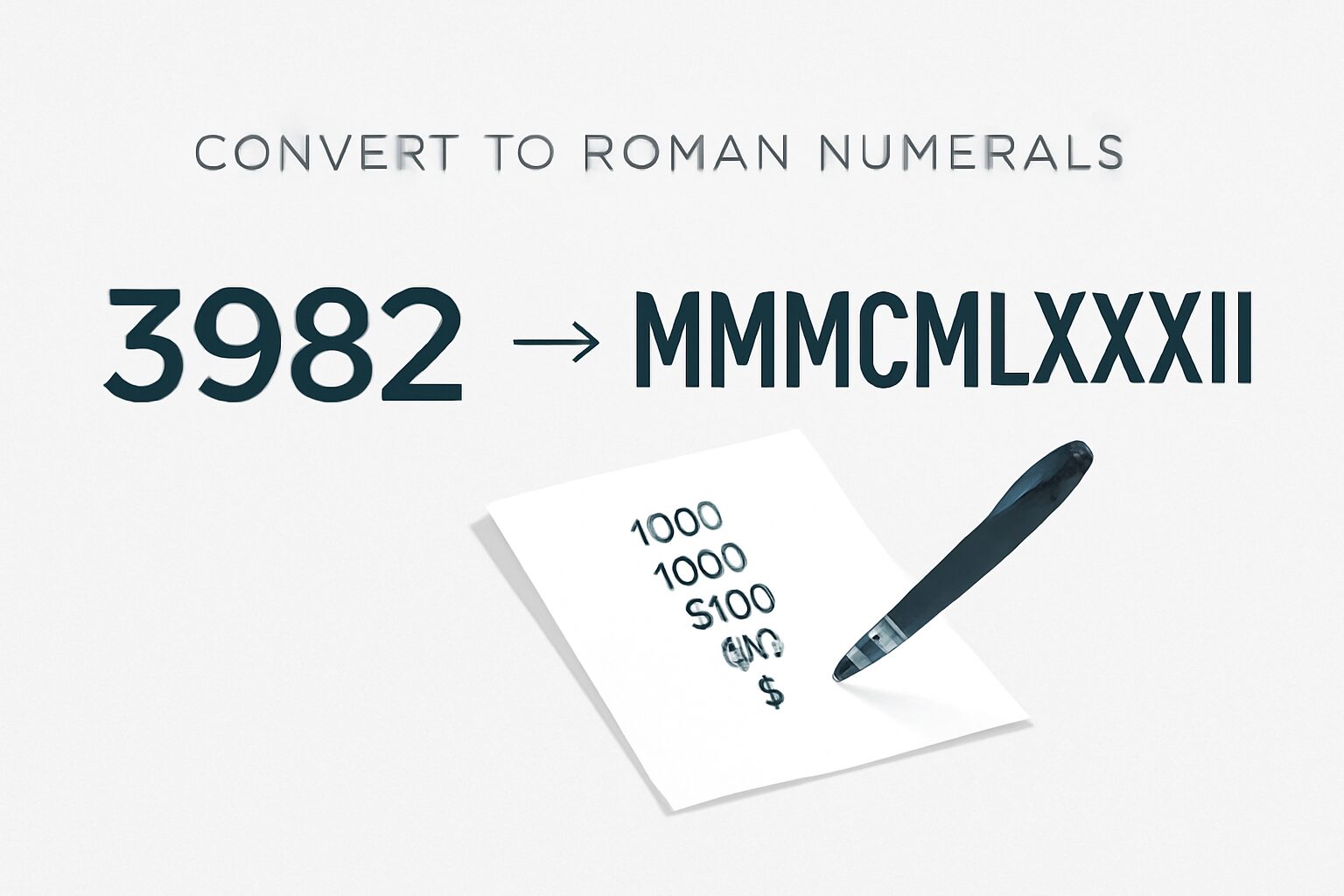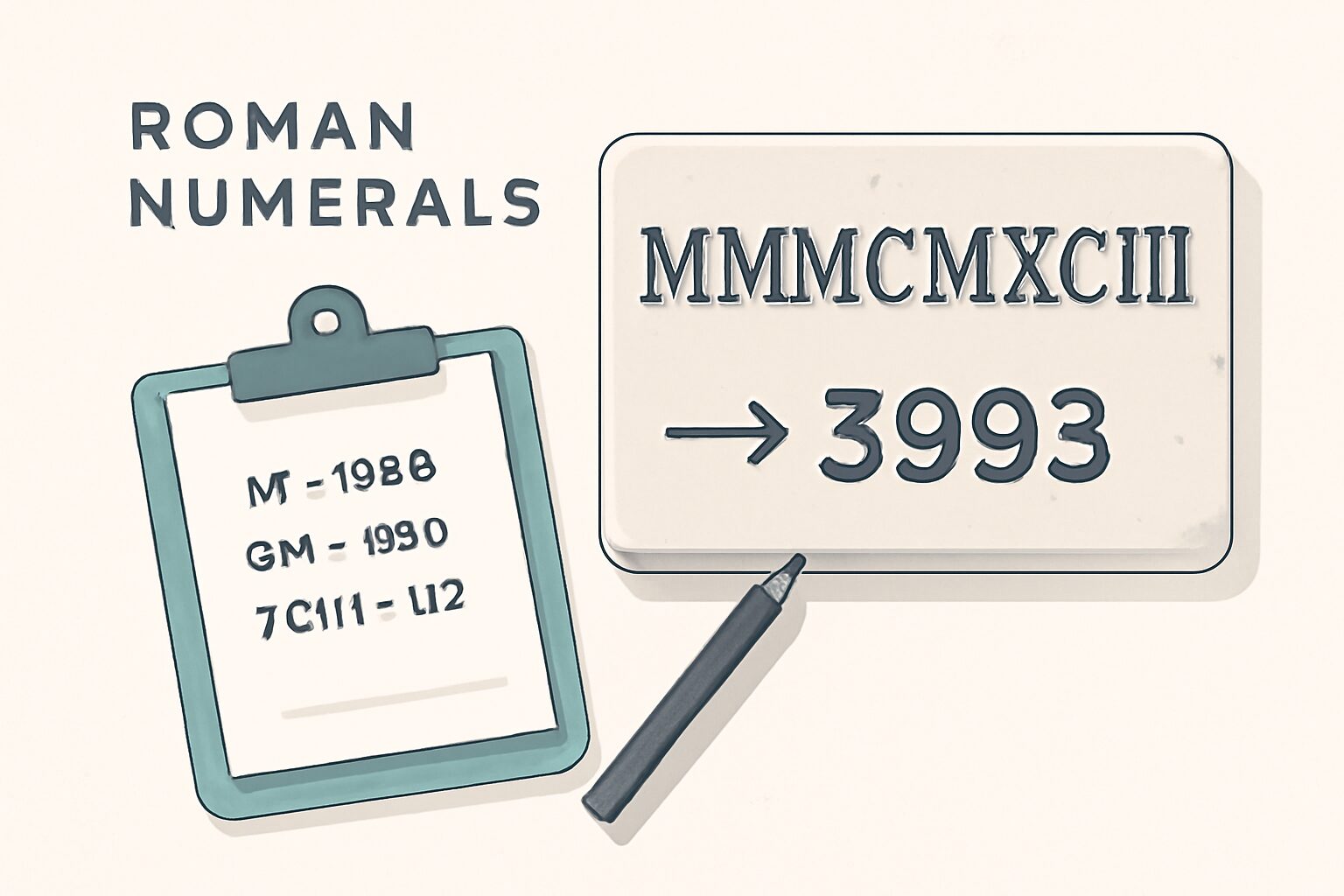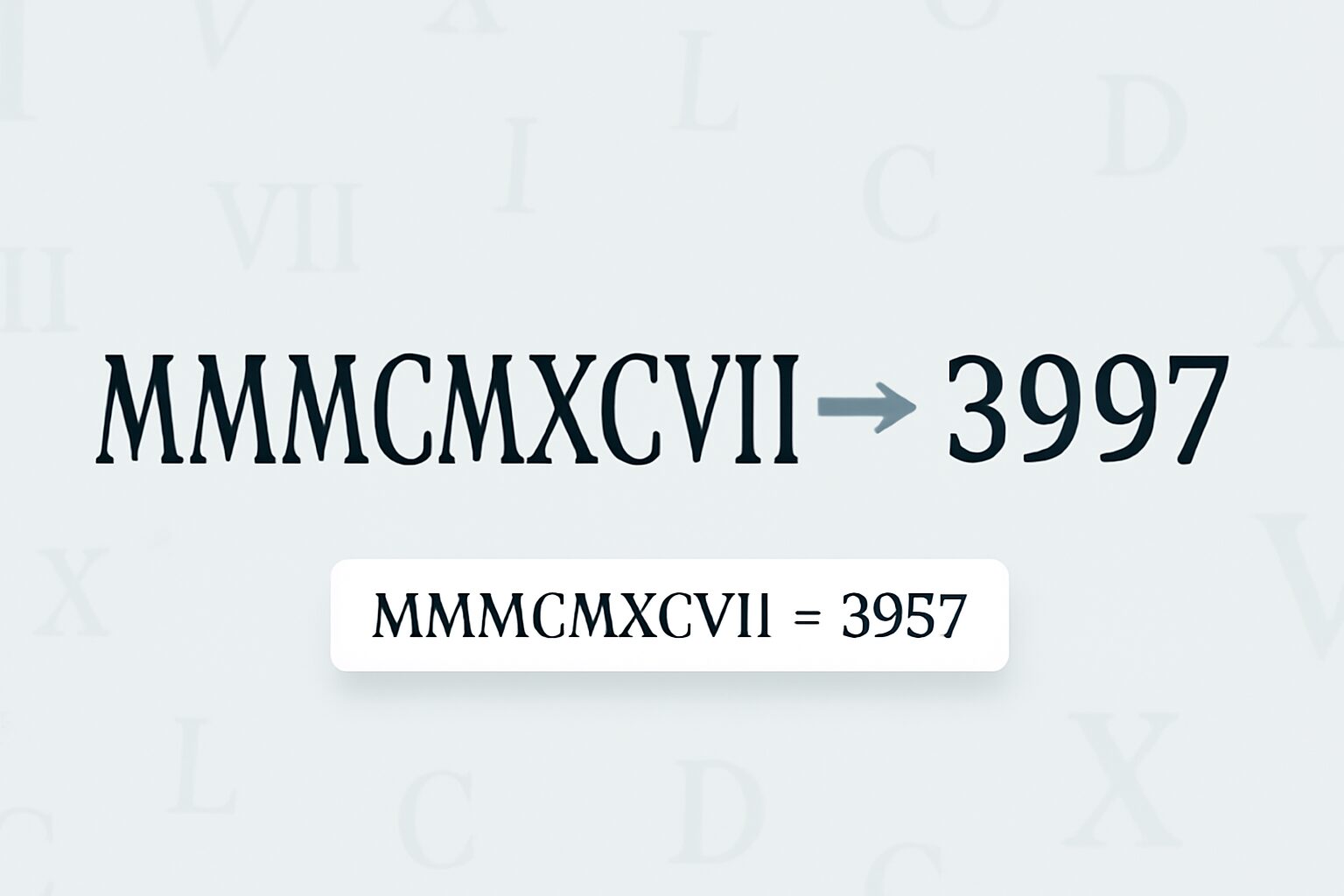
How to Convert 1 into Roman Numerals
Roman numerals are made up of seven letters: I (1), V (5), X (10), L (50), C (100), D (500), and M (1000). To write a number like 1, we combine these letters starting from the largest value and working down to the smallest.
Let's break 1 into parts and build the Roman numeral step by step:
1 fits into what's left of the number one time.
That means we add I to our Roman numeral because one × one equals 1.
Final Answer
After combining all the parts, the Roman numeral for 1 is:
I
Tip: If a smaller numeral appears before a larger one (like IV), it means you subtract. If a smaller one comes after a larger one (like VI), it means you add. You'll see both styles when needed.
How to Convert the Roman Numeral I into a Normal Number
To convert a Roman numeral to a normal number, we read it from left to right and add up the values of each symbol. However, if a smaller symbol appears before a larger one, we subtract the smaller value instead of adding it.
Let's break down I step by step:
Step 1: We see I, which means we add one (add 1).
Total calculation: I (1) = 1
Final Answer
The normal number for the Roman numeral I is:
1
Tip: Remember the key rule - if a smaller numeral appears before a larger one (like IV), subtract the smaller value. If a smaller one comes after a larger one (like VI), add the values together.
Number Analysis of 1
- Roman numeral: I
- Odd or even: Odd
- Prime or composite: Neither (1 is special)
- Factors: 1
- Square or cube: Perfect square
- Roman numeral length: 1 symbol
- Digit sum: 1
What happened in the year 1?
In the year 1, the Roman Empire was under the rule of Emperor Augustus.
In the year 1, the Han Dynasty in China was flourishing under Emperor Ping.
In the year 1, the estimated birth year of Jesus Christ, a central figure in Christianity, is traditionally placed around this time.
In the year 1, the city of Teotihuacán in Mesoamerica began its rise as a major cultural and urban center.
In the year 1, the Silk Road trade routes were facilitating cultural and economic exchanges between East and West.

